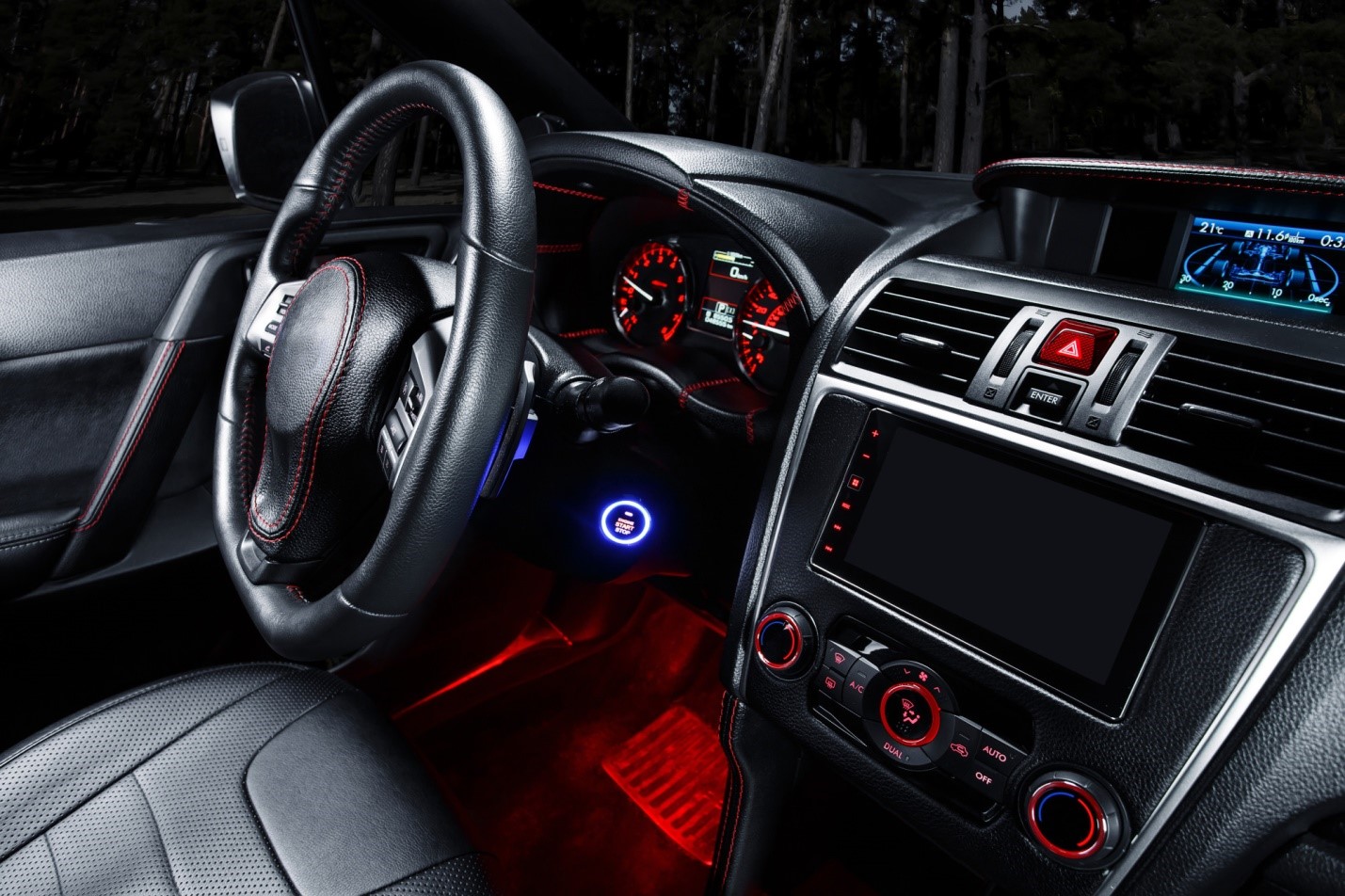[ad_1]
Engine remanufacturing is a precise science involving a plethora of engineering variables. Technology has evolved as engines have become more advanced. In recent years fuel reduction efficiency and emissions control have changed the way diesel engines have been designed and thusly remanufactured. In many cases, older once less fuel efficient models, are now being upgraded to better operating functionality. Oftentimes the engine is more powerful than day it originally left the factory 20 years before.
Ford Motor Company recently implemented a state of the art remanufacturing technique aimed at giving a new lease of life to engines that otherwise would have been scrapped for cost. Traditionally when automotive engines fail they are simply removed from the frame and replaced because remanufacturing techniques can be cost prohibitive to the consumer in relation to simply replacing the engine. A crack in the engine block or cylinder head usually meant one of two repairs: cold plug and stitch welding or using an expensive and time consuming process called hot welding where the entire block is heated up to 1400 degrees Fahrenheit, doing the weld in the oven and then letting the entire block cool down evenly in a sand pit for 3-5 days. Hot welding is more effective than cold stitch welding as the entire metal surface is structurally exposed to the heat thus not prone to weakness around the repaired crack.
Ford’s new adopted process is called Plasma Transferred Wire Arc coating technology. Different than traditional plasma arc welding processes, the new technology applies a thermal spray on the inside of a cracked or distressed engine block which molecularly bonds to divots in the metal structure. The surface of the block or cylinder head is honed properly to correct OEM specifications within.001 of an inch.
How Plasma Transferred Wire Arc Welding Works
Typically, remanufacturing a block requires iron-cast parts, custom welding and an intricate machining processes. Plasma Transferred Wire Arc technology works by using a traditional coating wire which is exposed at high pressure from atomizing gas mixed with plasma gas surrounded by a cathode. The cathode heats up electronically via the arc of the wire and the combination of both gasses are expelled via a
nozzle and released by a particle jet stream evenly over the engine block surface.
Plasma Transferred Wire Arc (PTWA) differs from traditional plasma arc welding techniques which are known as Wire Arc Spray Welding (WASW). PTWA relies on just the one wire for the metallic substance (feedstock) where as WASW relies on two metal wires which are independently fed into the spray gun. The charged wires create an arc and the heat of the two wires are melted to form molten material which is air fed by a jet to fill the weld. With PTWA welding the molten particles are then instantly flattened due to their high kinetic energy, then solidify upon contact to form crystalline and amorphus phases. With PTWA technology the plasma gas usually contains a higher amount of nickel which produces a gel like substance that bonds tight with cast iron or aluminum. It is possible to produce multi-layer coatings with PTWA welding. Using a different substrate in the feedstock can produce a base layer of particles that are primed for a secondary “sealer” layer of particulate matter that bonds on top of the first weld. This secondary coating makes for a highly wear-resistant coating. PTWA is typically used in engine components such as blocks, connecting rods, cylinder heads or bushings. With Transferred Wire Arc Welding either wire metal alloys can be used in the feedstock or a powdered form of a metal alloy. The most common powdered alloy to use is Cobalt #6 with a supplement of Nickel for better bonding strength at the substrate. In recent years companies have chosen to opt more for powered feedstock as it is at times 50% cheaper than traditional wire alloys.
The plasma generator or gun head consists of a tungsten cathode, an air-cooled pilot nozzle made of copper, an electricity conductive consumable wire which is the know as the anode. The head is mounted on a rotating spindle, which rotates up to 600 rpm. The wire is fed perpendicularly to the center orfice of the nozzle. The plasma gas is introduced through tangenital boreholes situated in the cathode holder to ensure a vortex is created. The entire process from creation of the arc to the delivery of the weld into the substrate happens all within .00050 seconds.
Plasma Transferred Wire Arc Weld Vs. Traditional Plasma Arc Welding
The advantages of Plasma Transferred Wire Arc welding versus traditional plasma arc welding are as follows:
Plasma Transferred Wire Arc welding is a high automated process and can be reproduced and replicated in large scale production and manufacturing facilities. Software can scan and automatically repair cracks or weak areas in the cast iron or aluminum. Plasma Transfer Wire Arc welding is simply a more precise method of welding over plasma arc welding processes. PTWA welding allows for detailed feeding of the metallic powder to the feedstocks. This allows for less waste and as a result a substantial amount of metallic feedstock quantity is saved for further use. One of the biggest advantages of Plasma Transferred Wire Arc welding is the precise control over important welding parameters. With PTWA amperage, voltage, power feedstock rates, gas flow rates and heat input can be controlled with a high degree of replication and consistency from unit to unit in a manufacturing facility. By controlling the heat input the welding operation can guarantee weld dilutions can be controlled roughly 7% in the vast majority of instances.
In addition to cost savings PTWA simply produces a better weld than traditional welding or even traditional plasma arc welding. Plasma transferred Wire Arc welding creates deposits of a particular alloy that are harder and more resistant to corrosion than alloys used in Gas Tungsten Arc Welding or Oxy-Fuel Welding. With Plasma Transferred Wire Arc Welding, deposits made into the substrate are categorized as having very low levels of oxides, inclusions and discontinuities. PTWA welds are very smooth overall due to the fact that the weld bonds on a molecular level to that of only the substrate and not the cast iron surface.
This significantly reduces the amount of honing needed post weld. Lastly, the biggest advantage of Plasma Transferred Wire Arc welding over plasma arc welding is the flexibility it offers to weld very precise cracks. The limits can be attuned to provide plasma deposits from 1.0 mm to 2.6 mm or higher as needed. With Plasma Transferred Wire Arc welding these minute welds can be precisely deposited in a single pass given the torch strength and powder used.
How Plasma Arc Welding Works
All plasma arc welding’s advantages comes from the energy produced from the plasma jet. The thermal energy output of the plasma jet is interdependent on the electrical input produced by the cathode. A normal temperature from Plasma Transferred Wire Arc welding can be upwards of 14,500 °F – 45,000 °F versus a typical electrical welding arc temperature of roughly 11000 °F. It is a common misconception that plasma arc welding varies from traditional electric welding however all welding contains partially ionized plasmas; the difference between the two is that during plasma arc welding there is one constricted volume arc of plasma.
During Plasma Transferred Wire Arc welding, the plasma arc is created when the negatively charged electrode comes into contact with a positively charged piece of metal. In more simplistic terms the arc is transferred from the cathode to the piece of metal that is being worked on. The in transit arc contains high plasma jet velocity and high density.
The velocity and speed of the arc makes traditional plasma arc welding perfect for cutting and melting metal materials where an oxyacetylene torch fails. The velocity is created by interrupting the circuit with a restrictive resistor which only allows a current flow of about 60 amps. This disruption of the circuit creates the transferred arc between the nozzle of the spray gun and the electrode and the preliminary arc is established between the electrode and nozzle. Once the preliminary arc touches the surface of the metal that is being welded the current flows between the electrode and metal surface thus igniting the transferred arc which is mostly a flammable powder. The final stage of ignition happens when the preliminary arc initiating unit becomes disengaged from the metal being welded. The preliminary arc becomes extinguished once the transferred arc has engaged between the electrode and the metal job site. The most common metals that can be welded using Plasma Transferred Wire Arc welding are Aluminum, Copper, Copper Nickel, Inconel, Monel, Nickel, Precious Metal Groupings, Low Carbon Steel, Low Allow Steel, Medium and High Carbon, Stainless Steel, Alloy Steel, Titanium and Tungsten. The metals that are not recommended for Plasma Transferred Wire Arc welding include Bronze, Cast, Malleable, Nodular, Wrought Iron, Lead and Magnesium Alloys.
New Plasma Arc Welding Technologies
Other types of welding that are in development or are in use by the major auto manufacturers:
Rota Plasma: This plasma arc welding process was created by Sulzer Metco and consists of a rotating powder atmospheric plasma spray system. This technology is currently in use by Volkswagen.
Twin Arc Wire: This is the most common and cost effective use of plasma arc welding consisting of two rotating feedstock wires. This technology was developed by AMG Corporation and in use at Daimler AG.
High Velocity Oxygen Fuel: General Motors has developed a high velocity oxygen fuel welding systems which incorporates more oxygen into the plasma substrate. This system also uses the traditional single wire feedstock system.
Plasma Transferred Wire Arc was in invented in 2009 by Flame Spray Industries and further perfected by the Ford Motor Company. In fact Plasma Transferred Wire Arc Welding received the 2009 IPO National Inventor of the Year award. PTWA technology is currently in use by Nissan in the Nissan GTR, the Ford Mustang GT500 as well as Caterpillar in heavy duty engine remanufacturing.
Representatives at Ford have stated the technology delivers a 50% reduction in CO2 emissions when comparing the cost of producing a new engine. Using recycled materials requires less downtime for the customer and reduces manufacturing costs. It will be interesting to see how precise welding gets as technology continues to improve efficiency, durability while reducing costs in coming years.
[ad_2]











